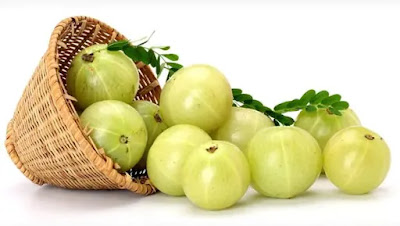Medicinal plant - Phyllanthus emblica
Scientific name: Phyllanthus emblic
Common name: Indian gooseberry, Amla and Usiri (Telugu)
Scientific classification:
Kingdom: Plantae
Sub-kingdom: Tracheobionta
Division: Magnoliophyta
Class: Magnoliopsida
Sub-class: Rosidae
Order: Euphorbiales
Family: Euphorbiaceae
Genus: Phyllanthus
Species: emblica
Phyllanthus emblica
Habit: Small to medium tree
Description: Leaves are compound, fruits are light green or yellow and flowers are greenish yellow, this tree grows as long as 18 m, but in hilly areas it grows up to 25 m.
Useful parts: Whole plant
Medicinal uses: It is useful to get energy, for blood circulation and , as anti oxidant, to remove wastage from the body, to dwindle diabetes, to reduce risk of cancer, useful for constipation, common cold, scurvy, treatment of human bone disorder, jaundice, skin ulcers, skin problems and for heart diseases.
Dosage: Fruits are eaten daily to enhance blood circulation, dry amla fruits are also eaten, fruit juice is drunk to reduce many health problems, powder of fruits and turmeric powder is mixed and used this when someone is suffering from fever and to treat skin diseases.
Chemical Constituents: Fruits are rich in Vitamin C (ascorbic acid), emblicanin A, emblicanin B, pendunculagin, punigluconin, phyllanemblinin A, punicafolin, phyllanemblin, kaempferol, flavanoids, gallic acid, and ellagic acid
Side-effects: Too much of anything is hazardous, high dosage of this might trigger the acidity because of C-vitamin, increases constipation problem, reduced weight and also too much of this enhances sugar levels in the blood which is harmful to diabetes patients.
The high amount of Amla is not advised for pregnant woman and babies as it causes dehydration, it upsets the stomach and it might cause diarrhea
(Image Source - Google image)
-Shree Ambica
-Shree Ambica




Comments
Post a Comment